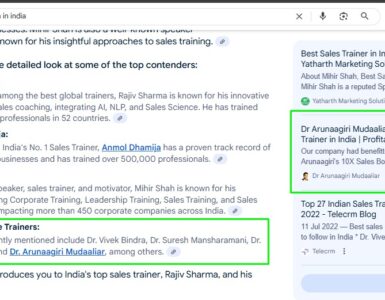Introduction
In the highly competitive sales world, continuous training and development of sales teams remain non-negotiable. But what distinguishes regular sales training from a profitable one? It is the kind that drives results, boosts revenues, and impacts the bottom line. In this blog, we will delve into the essential strategies for profitable sales training and how to implement them.

Start with the Basics: Understanding Profit-Centric Sales
Understanding Customer Lifetime Value (CLV): Teach your salespeople the value of repeat business and upselling. This emphasizes focusing on long-term profitability rather than a one-time sale.
Cost of Acquisition: Break down the costs of acquiring a new customer and how it compares to retaining an existing one.
Tailor Training to the Individual
Customized Modules: Recognize that each salesperson is unique. A blanket approach may yield better results than a blanket approach.
Feedback-driven Learning: Regular feedback sessions can highlight individual strengths and areas of improvement.
Embrace Real-world Simulations
Role-playing: This not only helps in understanding the customer’s perspective but also in honing negotiation skills.
Selling Scenarios: Design scenarios based on actual challenges faced by the team in the field.
Incorporate Technology
Sales Training Platforms: Use modern platforms that offer interactive and engaging content, analytics, and track progress.
Virtual Reality (VR) and Augmented Reality (AR): These technologies can provide immersive training experiences, replicating real-world sales environments.
Continuous Learning is Key
Ongoing Training: The market, products, and customer preferences are ever-evolving. Regular training sessions keep the sales team updated.
Micro-learning: Short, focused bursts of information or training modules can be more effective than lengthy, infrequent sessions.
Sales Analytics: The Goldmine of Information
Training Metrics: Use analytics to understand which training modules are practical and which need revamping.
Sales Performance: Correlate sales performance with training received to refine the training process continually.
Encourage a Growth Mindset
Openness to Feedback: Constructive criticism is a gateway to improvement.
Adaptability: Encourage the sales team to be adaptable. As the business landscape changes, so should your sales strategies.
Investing in Soft Skills
Empathy and Active Listening: Understanding the customer’s needs and concerns is paramount in sales.
Conflict Resolution: Only some sales go smoothly. Equip your team with the skills to handle objections and disputes.
Conclusion: Profitable sales training is about more than just product knowledge or sales tactics. It is about understanding the broader business landscape, the value of long-term relationships, and the ever-changing nuances of customer needs. By incorporating these strategies, businesses can uplift their sales numbers and ensure consistent growth and profitability. Remember, the best sales training programs evolve with time and feedback. Keep a keen eye on results be prepared to adapt, and the path to profitability will become more apparent.

















Add comment